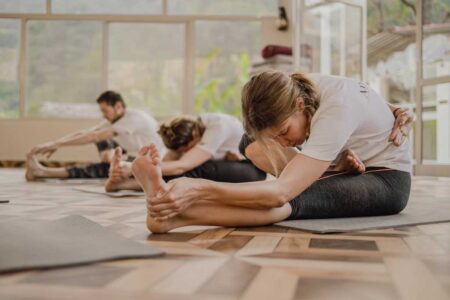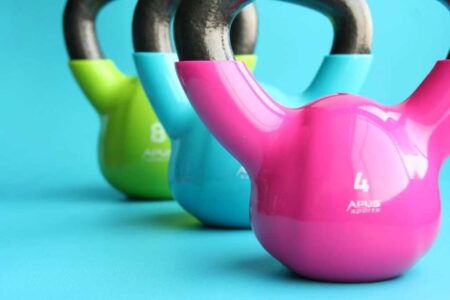
Accidents happen, and when they do they can leave you sore, injured and out of action for longer than you might think! But don’t worry because, whether you’re temporarily hobbling or figuring out how to navigate life’s new normal, here’s a guide to help you stand tall (even if it’s on crutches) after an accident.
1. Take a Beat—No Need to Star in an Action Film
First things first, breathe. Yes, breathe. You’ve just had an accident, and your body (and mind) need time to process the whole fiasco. We all like to imagine ourselves as the star of an action movie who rolls away from a crash, dusts off their jacket, and quips something witty before strolling away. In reality, your body is screaming, “Hey buddy, what just happened?” So, give yourself permission to lie down, rest, and binge-watch something shamelessly lowbrow until the dizziness passes. Channel your inner sloth for a hot second—it’s an underrated strategy for healing.
2. Embrace the Emotional Whirlwind
Physical pain might be the first thing to tackle, but don’t underestimate the emotional roller coaster that can follow an accident. You might feel a weird cocktail of relief, anger, confusion, anxiety, or even the irrational desire to blame your left foot for stepping the wrong way. Take heart—this is all part of the process. Acknowledge your feelings instead of pushing them into a locked drawer labeled “DO NOT OPEN.” Talk to trusted friends, family, or a support group if needed. Even better, have a post-accident meltdown in the shower where you can cry dramatically and pretend it’s all just the water running. Hollywood’s got nothing on you.
3. Lean on Your Inner (and Outer) Circle
You know those people who always say, “Let me know if you need anything,” and you respond, “Nah, I’m good”? Well, newsflash: this is the time to cash in on those offers. Suddenly, that friend who can whip up homemade chicken soup in 20 minutes flat is your best ally. Your cousin with a knack for rearranging furniture? Get them on speed dial to make your living space crutch-friendly. This is not the time for stoic independence; it’s time to humble-brag about your awesome support network. And if you’ve got a pet? Give them extra cuddles—they might not do laundry, but they’re excellent at boosting morale.
4. Don’t Skip the Docs
Ever think about self-diagnosing with Dr. Google? Don’t. As tempting as it is to type in your symptoms and wait for an online quiz to confirm your worst fears, it’s way better to trust the professionals. Let an actual, qualified doctor check those bumps, bruises, and broken bits. Not only will it keep your overactive imagination in check (“Yes, an X-ray is definitely better than my phone’s flashlight to see if my ankle is okay”), it’ll give you a concrete path forward. Because guess what? Proper treatment is kind of important. Even if it’s just a fancy bandage and some prescription-strength painkillers, you’ll be glad you know what’s really going on inside that rebellious body of yours.
5. Rehab Like a Boss
So, the doctor says you need physical therapy or maybe some gentle exercises to get you back up to snuff. Cue the eye roll, right? Wrong. While it might feel like you’re moving in slow motion (and you might be), rehab is your golden ticket to reclaiming your day-to-day swagger. Plus, a rehab session is a great time to daydream about your triumphant comeback—you know, the day you jog around the block, do a jumping jack without wincing, or return to your beloved motorcycle with a grin. Think of it as training for the Olympics of Everyday Life.
6. Consider Calling in the Legal Eagles
If your accident wasn’t entirely your fault—say someone else’s engine, banana peel, or questionable decision-making was involved—you might have more than just medical bills to worry about. That’s where legal assistance for motorcycle crash victims (and other accidents) comes in. Sometimes, just knowing you have an expert in your corner can help you focus on healing rather than stressing about insurance claims and confusing paperwork. And if you do need to press charges or negotiate a settlement, you definitely want a pro by your side who can handle the big, scary terms like “negligence” and “compensation.” You keep doing your rehab exercises; let them handle the legalese.
7. Ease Back into the World
Once the physical pain subsides and you’ve got the green light to resume your regularly scheduled life, take it slow. After an accident, it’s easy to either push too hard too fast or to become best friends with your couch cushions. Aim for the middle ground. Test out your newly healed body with light activities—go for short walks, practice yoga if that’s your jam, or even do a test run around the block (on foot or two wheels, if you’re ready). Confidence builds gradually, and each small step is a victory worth celebrating.
8. Celebrate the Comeback Kid
Whether you’ve moved from a wheelchair to crutches, or from crutches to two fully functional legs, or you’re simply able to wiggle your toes pain-free, celebrate it. High-five your mirror if no one’s around to witness your awesomeness. Remember, you survived something scary, and you’re stronger for it—maybe not physically yet, but mentally. Accidents can be life’s way of saying, “Slow down and appreciate your health, will ya?” So, take the hint, pat yourself on the back (metaphorically if your arms are still sore), and look forward to the day you’ll be completely back on your feet—perhaps with some extra funny stories to share.
Get well soon!








